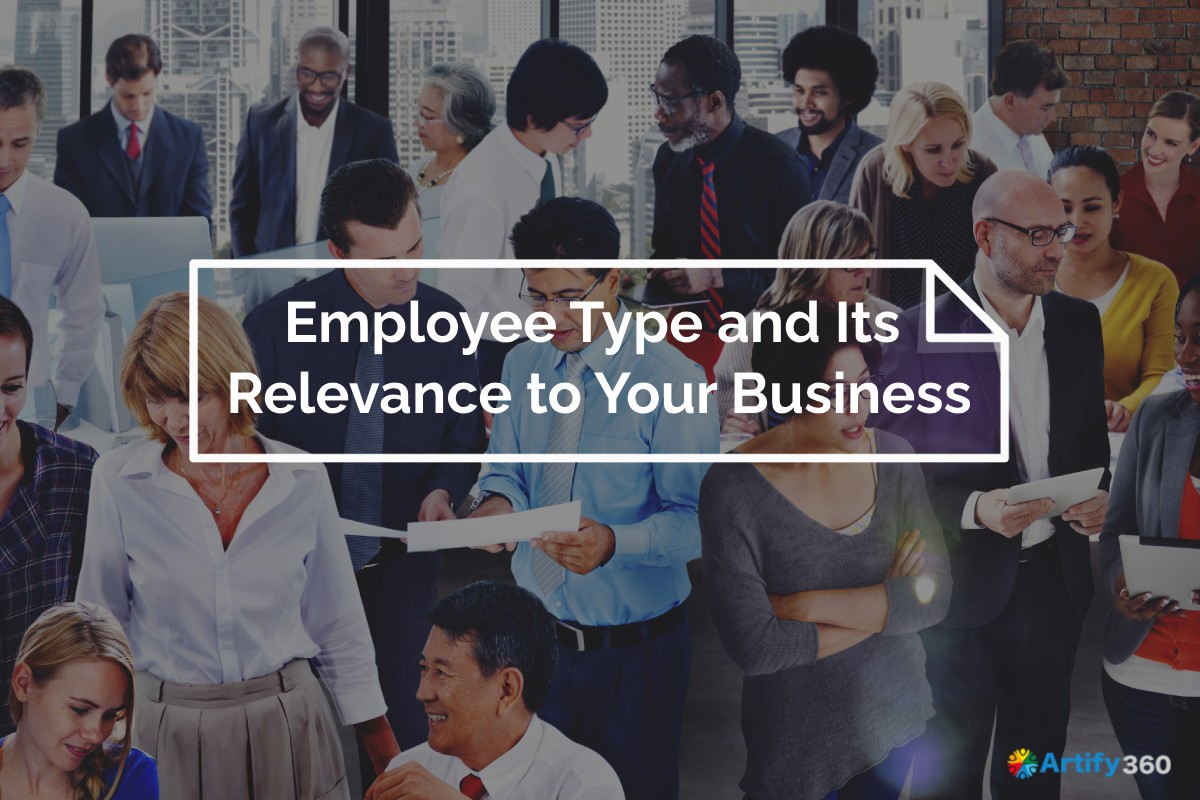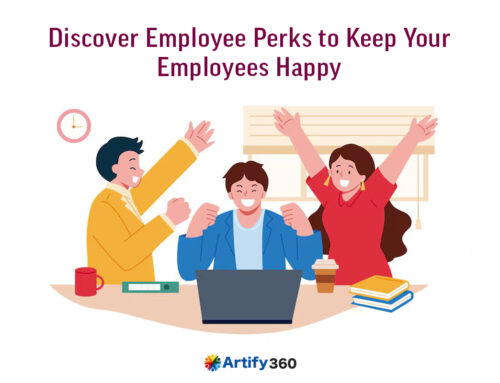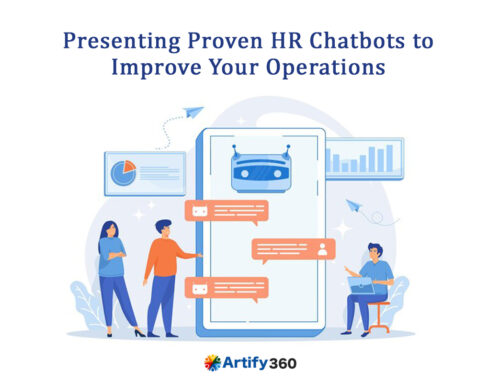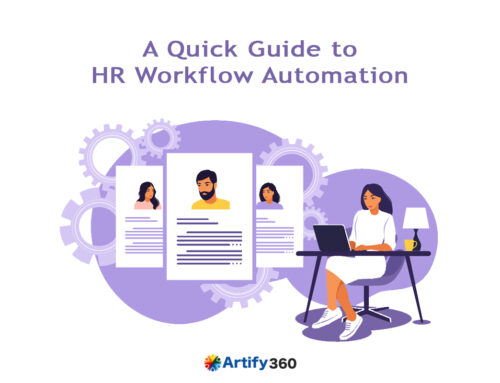Classification of your employees is a manyfold system that captures unique characteristics from different angles. The need for classification owes to the thorough adoption of labour market requirements in the working space of your business model. It also deserves to exist because of the core need to segregate and manage your employees in segments.
As part of streamlined employee management tactics, the exclusive idea is to develop an empowering employee classification system. It details the need to develop an essential organizational structure that promotes the concept of employee type at optimum rates.
The possession of a basic understanding of the employee types of a business and its market positioning goes hand-in-hand with the general HR goals and objectives. This article helps explain the specific role of employee-type classifications and their relevance in an organization.
The post supports you in determining the quality features of ensuring the division and adoption of employee type in your organization. It covers the general mistakes to avoid in this category as well. Hop in to discover more information and guide coverage regarding the employee type and its distribution in your business model.
Employee Type: What is It & Why Does It Matter?
The definition of employee type refers to the specific relationship between an employee and their work environment in a professional capacity. If you are an employer or HR professional, it is your duty and responsibility to analyze and recognize the type of work or worker that matches each resource in the firm.
The essential need for observing and understanding employee-type models in a business can be highly regarded as a trait to determine business effectiveness. It refers to the management of your business from an efficient operational perspective that covers multiple areas of the workflow. Employee-type classification aids in this matter.
Actionable insights will be available for your business model when you employ quality employee-type management in your organization. It helps you create and provide informed decisions on the topic. You might be able to match the business criteria with the in-house resource management techniques.
The well-crafted and defined roles of various employee types can suitably assist you in developing an outstanding business model for your organization. It connects your company to sync well with the existing business practices and innovative technology solutions that are part of the niche.
It is important to learn about the various types of employee classifications that exist in a firm. Full-time roles occupy less than 85% of the workforce only. The rest belong to other classes of employee types in the firm.
Common Types of Employees in the Organization
One of the major purposes of your organization is to understand the most popular functions of employee engagement in the business model implementation. We are referring to the classification of employee types, the highlight of this article. You need to have a thorough understanding of the various worker types in an organization.
Without further ado, let us take a look at the list of classifications of employee types:
Full-time Employees
The most common employees in an organization or industry are the full-time resources. A full-time position represents the lion’s share of your workforce at any given time and promises the most crucial output solutions to your operations model. These usually denote the permanent employee position of resources in an organization.
Part-time Employees
Next to full-time roles, these are significant divisions of human capital resources in a firm. They represent the section of employees who are committed to the cause but still do not belong in the organization for the grant scheme of things.
Contractual Employees
These are purely contract-based employees who are hired by the organization directly or with the assistance of a third-party agency. You can get this employment contract service agreement to suit your purpose in the remote workers’ department or hybrid workflow management of the firm.
Interns and Trainees
You can add value to your business branding and market positioning with the recruitment and hiring of various internship personnel and company trainees. These are unique resources that offer a fresher perspective to your workflow management. You can discover a competitive employee from this category.
Independent Resources and Freelancers
If you can leverage the services of independent resources to meet your organization’s additional requirements, it will be a boon. Freelancers are the optimum resources that suit this particular employee type model.
Commission-based Employees
You can provide a genuine resource management model that helps you in the process of commission-based workforce and workflow solutions. These resources will not have any ties or attachments to the organization.
Volunteers
If you can follow the services of different volunteers or similar resources to fuel your organization’s workflow, it helps you grow as a genuine business model with levels of commitment. It will improve the scale of employer branding for your organization. It is part of mindful employee contributions to your business model.
Temporary Employees
The idea of embracing employees to your firm on a temporary position for existing model workflow can be genuinely adopted to boost the various organizational functions with effective ease. They can help you grow in the workforce management domain.
Leased Employees
If you can lease out job roles, employee profiles, and positions based on resource management models, it will reflect heavily on your organization’s progress. These depend on the projects and contact agreements that your company undertakes regularly.
Also Read: Importance of Employment Contract in Bahrain
Casual Resources and Apprentices
The ideal value of casual resources and apprentices in an organization cannot be understated. These are temporary yet crucial for the growth of your various projects and the organization’s success. The employee persona in this category should be strictly professional.
Probation Resources
You have the option to employ resources on probation mode alone. These will open up newer channels to foster value-added services to your organization’s different employment types and status upgrades.
Seasonal Employees
The ideal support that you can give to your employees depends on the evaluation of resource flow at various stages of the company’s progress. These apply to the seasonal workers of an organization, where employees can be hired accordingly. They are part of the current employees at any given time in an organization’s workforce analysis.
Consultants and External Partners
You can get active services from various employee consultants and external or vendor partners. These are resources that you can employ for short-term roles. They could yet be vital for your organization’s business model management process.
Group Resources and Contingent
When you select and deploy a group of employees with similar interests, it is called a contingent. These group resources occupy a special place in the organizational management of employee performance efficiency.
General Features of Classification of Employee Type
When you adopt the valuable route of classification of employee types, it is helpful to know certain tips in advance. These are uniquely feasible in the management of different features and functions of the concept within the business model. The top-notch features to help you boost your business with the idea of employee-type execution are as follows:
Tracking Functions
The tracking and reporting features in employee classification management are of crucial significance in any context. It helps you have a proper say on the core employee engagement values for your firm.
Time Management
The classification and management of a period of time are strictly valuable for the growth and success of your organization. You should focus on factors related to overtime, employee productivity time, average working hours, etc. Professional employer organizations dig this feature.
Reviews and Feedback
An exclusive feature that can guide your growth is the collection of employee feedback and constructive reviews to boost your overall performance and business model objectives. The feature helps you with future forecasts. It also improves employee recognition and relationships.
Payroll Processing
The ideal role of payroll processing under the operations management segment should be duly represented to determine the quality of employee type. It means that compensation or employee benefits are part of the classification divisions in a firm. You can ensure the pay of minimum wages for all employees with this feature.
Employee Database
The exclusive idea of creating documentation and an employee database is responsible for improving the quality and accuracy of overall HR operations. It applies to the impactful execution of employee-type functionalities in your organization.
Mistakes to Avoid in Employee Type Classification
HR personnel and company leaders tend to make mistakes when they are functioning as part of employee management resources. The same could occur in the development of classifying types of employees and employment. You should note down the general mistakes in advance to stay above them and create an organized workplace model.
Some of the common mistakes that could happen when dealing with employee type classification are listed below:
Cost-related Problems
The most prominent issue of an employee type classification is the one related to cost-effectiveness and management. If you go over the budget or spend unnecessarily on employee engagement, it could prove costly in the long run. Workplace accidents from employee errors could result in cost and productivity issues. The numbers are above 90% for this particular category of mistakes.
Dissatisfaction Among Employees
If the classification of type creates dissatisfaction among your employees, it will not be beneficial for the organization’s purposes in the long term. It could lead to problems like employee rift, conflict, chaos, and turnover.
Lack of Knowledge About Work Criteria
The work management criteria are essential for boosting employee-type values. It includes terrific knowledge regarding the work specification and configuration methods. Lack of expertise in this feature could be a mistake.
Issues with Recording and Reporting
When you provide access to the features of recording, observing, reporting, and analyzing, it is important to avoid mistakes in those categories. You might face issues in this domain as a result of non-compliant HR operations.
Inappropriate Understanding of Employee Type
A proper evaluation of the entire employee type management is important for HR divisions and organizations to excel in the niche. It won’t work well if you have concerns about the suitable handling of the domain, leading to errors and mistakes.
Misclassification Troubles
You can make the mistake of misclassifying your employees. It could prove huge and costly for managing the top-notch applications regarding employee engagement in businesses. You may see that this problem causes errors and misconceptions for your company.
Artify 360 HR Software & Its Services in Employee Type Management
You might be wondering whether it is feasible for an organization to promote the role of distinct employee types. Classifying employees in your business becomes easy if you are capable of adopting an engaging digital automation platform to fulfill those tasks. We are referring to the Artify 360 HRMS product.
Artify is an HR payroll software that is capable of carrying out employee engagement functions with ease. Our exclusive reporting modules can document the necessary employee-type classification requirements for your organization. It is one of the proven and dedicated one-stop HR software system solutions that has left a trademark in this category.
Our in-house team promotes a dedicated software solution model that works exclusively well in managing the cloud HR software needs related to the types of employee classification. You can reach out for a free consultation related to trial versions, demo sessions, or any other queries.






